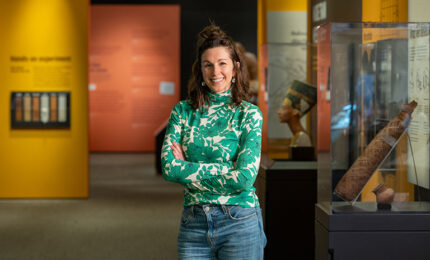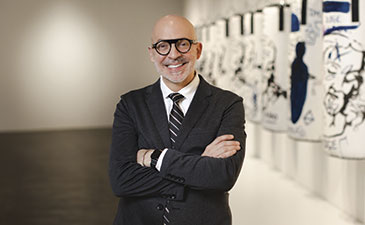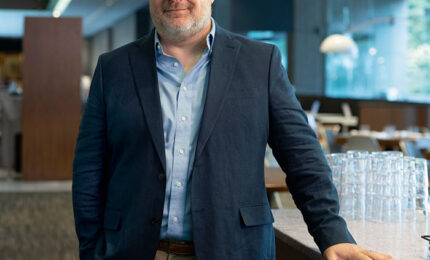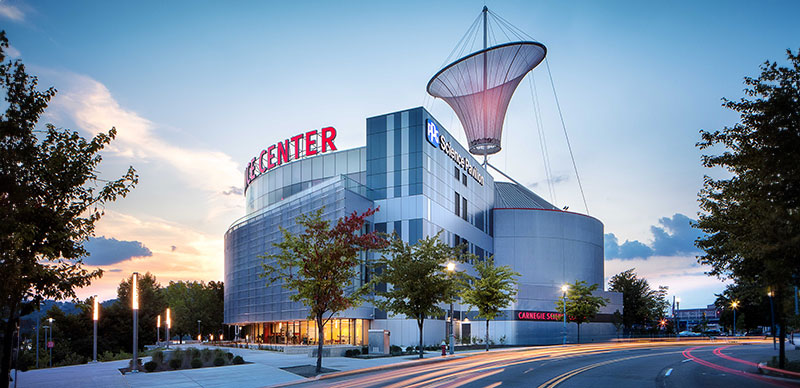[media-credit name=”Photo: Joshua Franzos” alignnone size-full]
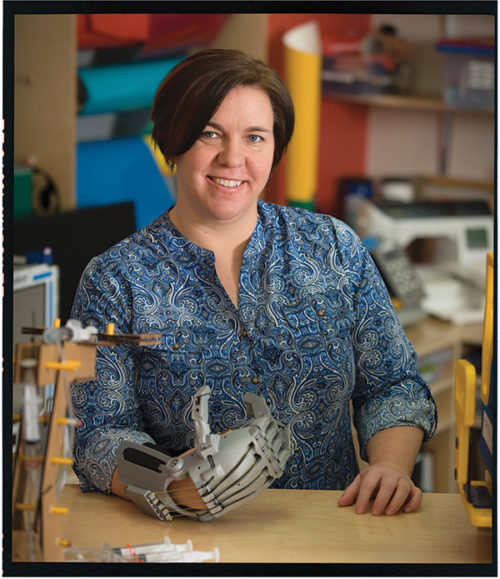 Photo: Joshua Franzos
Photo: Joshua Franzos[/media-credit]
When self-described “maker” Liz Whitewolf learned that her daughters wanted loft beds, she didn’t take them shopping. Instead she helped the girls, then ages 5 and 7, design and build their own. With this, they too caught the maker bug. Now in middle school, the pair uses the laser cutter, 3D printer, and even the chop saw (with supervision) in their family’s workshop to spruce up school projects and fashion their own inventions. “Being a maker is about personalization and localization of resources,” says Whitewolf, who joined Carnegie Science Center in 2015 to open and manage its Fab Lab, presented by Chevron. Located in the Highmark SportsWorks® building, Fab Lab Carnegie Science Center is a digital fabrication space that’s all about inspiring and empowering the next generation of makers. It’s part of a network of about 1,000 makerspaces scattered across the globe that share a mission of making accessible the tools needed for digital and technological innovation. For Whitewolf and her small staff, this means hosting professional-development workshops for teachers, classes for students as well as the public, and even pioneering a program that makes digital making possible for those who are visually impaired or blind. It also means meeting schools where they are—literally—by way of two Mobile Fab Labs. Whitewolf recently earned her stripes as a “Fab Lab Guru,” having completed Fab Academy, a demanding hands-on training course that only half of participants finish. “I wanted to learn all I could and then pass that learning on to local teachers who can’t afford to take the course,” she says. Whitewolf also shares her expertise globally; she’s traveled to Shenzhen, China, and Santiago, Chile, to present at maker conferences and consult with other maker education programs. “I love the maker community” she says, “because makers are willing to share their best ideas.”
How did you become involved in the maker movement?
As a kid, I liked making things and knowing how they worked, but I didn’t know jobs like mechanical engineer existed. In college, I studied technical theater because I could make stuff and do all sorts of technology projects. In fact, I got my first job in STEM [science, technology, engineering, and math] because of my theater background. I was the stage manager of a robotics competition. It was so cool to see how much the kids learned doing robotics. From there, I was able to build a career in STEM.
Fab Lab’s mission is to integrate STEM competencies into authentic making experiences. What makes an experience authentic, and why is that important?
Authenticity is what makes learning stick. It ties educational projects to real-world problems. For example, the Fab Lab collaborated with the Enabling the Future program on a project in which students fabricated prosthetic hands. Not only did the students learn how to use the 3D printer to print parts, they ran a community workshop to teach members of the public how to put the hands together. They even met someone who used one of the hands they made. They can see they are doing something with a purpose.
Do even preschoolers have something to learn from digital fabrication?
Before coming to the Fab Lab, I taught in a high school. Most of the students had never prototyped before. Prototyping is about trying something, failing, and trying it again. It’s a real skill. I worry that high school is almost too late to learn that skill. By that time students are already afraid of failure, and they don’t want to take risks because of that fear. That’s why I wanted to extend the Fab Lab’s programs to young learners. It’s not important that a 4-year-old can use a laser printer. What’s important is that they can make something, test it, and fix it.
So you’re teaching kids how to fail?
It’s about embracing risks and understanding that failing is part of the process. Digital fabrication offers an opportunity to practice skills that aren’t necessarily measureable. Skills like problem solving, design thinking, and collaboration—so-called 21st-century skills.
How do kids respond?
What is so cool is kids can make a connection between what they type into a computer and how it affects real life and things they care about. We have a program right now called Mentors in Making, through which underserved teens are matched with a STEM professional to work on a project. One student wants to start a business. Another wants to do something to help his school. We provide the tools, they identify the problem and create a solution.
How is the Fab Lab making digital fabrication more accessible to everyone?
When we started to research how to involve people who are visually impaired in digital fabrication we found nothing. No one is doing it because 3D design programs aren’t compatible with screen readers. We had to experiment. We made boards students could design on with their fingers. Or kids can make shapes with Play-Doh and wax or pushpins and string. We designed a process so they can take a picture of their object and send it to the computer by themselves. Then they go to the printer and press “go.” That way they are involved in almost all aspects of the project. We made foam gliders on the vinyl cutter together. Then we all went outside and they flew their gliders. It was awesome.
